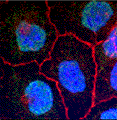Biochemistry, Department of
Document Type
Article
Date of this Version
6-16-2021
Citation
Sun X and Feinberg MW (2021) Vascular Endothelial Senescence: Pathobiological Insights, Emerging Long Noncoding RNA Targets, Challenges and Therapeutic Opportunities. Front. Physiol. 12:693067. doi: 10.3389/fphys.2021.693067
Abstract
Cellular senescence is a stable form of cell cycle arrest in response to various stressors. While it serves as an endogenous pro-resolving mechanism, detrimental effects ensue when it is dysregulated. In this review, we introduce recent advances for cellular senescence and inflammaging, the underlying mechanisms for the reduction of nicotinamide adenine dinucleotide in tissues during aging, new knowledge learned from p16 reporter mice, and the development of machine learning algorithms in cellular senescence. We focus on pathobiological insights underlying cellular senescence of the vascular endothelium, a critical interface between blood and all tissues. Common causes and hallmarks of endothelial senescence are highlighted as well as recent advances in endothelial senescence. The regulation of cellular senescence involves multiple mechanistic layers involving chromatin, DNA, RNA, and protein levels. New targets are discussed including the roles of long noncoding RNAs in regulating endothelial cellular senescence. Emerging small molecules are highlighted that have anti-aging or anti-senescence effects in age-related diseases and impact homeostatic control of the vascular endothelium. Lastly, challenges and future directions are discussed including heterogeneity of endothelial cells and endothelial senescence, senescent markers and detection of senescent endothelial cells, evolutionary differences for immune surveillance in mice and humans, and long noncoding RNAs as therapeutic targets in attenuating cellular senescence. Accumulating studies indicate that cellular senescence is reversible. A better understanding of endothelial cellular senescence through lifestyle and pharmacological interventions holds promise to foster a new frontier in the management of cardiovascular disease risk.
Included in
Biochemistry Commons, Biotechnology Commons, Other Biochemistry, Biophysics, and Structural Biology Commons



Comments
OPEN ACCESS